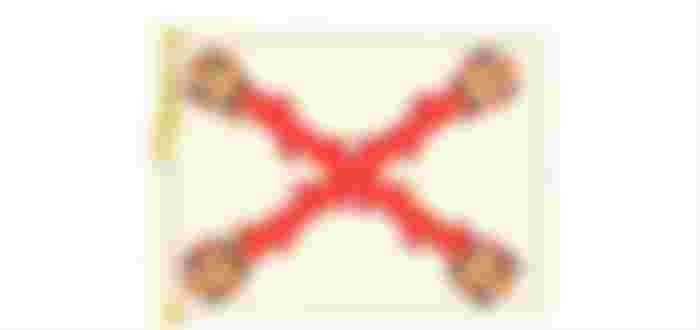
The Philippines was first discovered by Ferdinand Magellan (Spanish name: Fernando Magallanes | Portuguese name: Fernão Magalhãnes) on 16 March 1521. The Life of Magellan Magellan had been involved in his father's expeditions to Africa when he was only 25 years old.
He had hoped to undertake an expedition to India. Like Chistopher Columbus he thought that when the world was round, he could go East by sailing to the West. So he went to King Emmanuel I. of Portugal, with a view to helping his country.
He asked her to give him some money to make the expedition. But the king did not believe his plan. In the wrath of the king, Magellan left the country of his birth in Spain. Here he tried to go to King Carlos I. and inquire here. Carlos I. agreed and signed in September 1519. Magellan arrived with five ships (Santiago, Victoria, San Antonio, Trinidad, and Concepcion) and 300 people (including Antonio Pigafetta as recorder).
First Philippine Expeditions
The Europeans first arrived in the Philippines on the arrival of the Portuguese-led expedition of Ferdinand Magellan on 16 March 1521. Magallanes marched on the island of Cebu, claimed it for Spain, and gave it the name Islas de San Lazarus. [3] He was friendly with some local locals. They even held a traditional bloodstream where blood was pumped out of the arm, mixed with water or wine and they drank together. In this way, the blood of his companion is in his veins making them "blood brothers", a sacred and irrevocable covenant. Magellan even convinced her to become a Christian. [3]
He was able to do this with Humabon of Cebu because of Christianity, children respect adults. This prompted the commercialization because at that time children were not respecting the elders because they could no longer do good to the tribe. Children are the ones who order the adults.
It represented an important event in Philippine history. Magallanes won against Humabon by bringing in a new culture that values human dignity.
However, Ferdinand Magellan was killed by Lapu-Lapu's group, which opposed Spain's rule. Magellan challenged Lapu-Lapu in a battle, to show how the Europeans fought.
There are three reasons why Magellan was defeated against Lapu-Lapu: (1) He did not send a staff to examine the area, (2) he warned the enemy to attack him and (3) he agreed that more tribes would fight against him staff.
In the following decades, other expeditions were sent by Spain to the Philippines. In 1543, Ruy López de Villalobos led an expedition to the islands and named Las Islas Felipinas (from the name of Felipe II of Spain) the islands of Samar and Leyte. Soon, this name was given to the entire archipelago.
Spanish colony The permanent settlement was established only in 1565 when the expedition led by Miguel Lopez de Legazpi arrived in Cebu from Mexico. The Spanish leadership was established in small independent communities unaware of the centralized government.
[4] Six years later, after defeating a Muslim datu, Legazpi established a capital in Manila, providing the main port of the Look of Manila, a large population and close to the plains of Central Luzon. [5] Manila has become a center of colonial government, as well as military, religious and commercial activity.
Famous galleons sail between Manila and Acapulco, Mexico. They brought silver and some precious metals from the New World to Manila to buy spices from Moluccas and porcelain, ivory, lacquerware and silk from China and Southeast Asia. Although they were used in Mexico, most of the goods were brought to Spain, for sale in Europe.
The Philippines became the province of Nueva Spain until 1821, when Mexico gained independence. [6] The conquest of the archipelago succeeded without a fight (except for Muslims).
[5] The Spaniards have been a problem for the Muslims in Mindanao and Sulu. In response to the Spanish attacks on Muslims and their allies, they invaded areas in Central and Visayas under Spanish rule. The Spaniards launched campaigns against Muslims, but they did not have a definite result until the middle of the 19th century.
The Church and the State were intertwined during the Spanish period. Religious establishments have become the state's responsibility.
[5] One of Spain's goals in the colonization of the Philippines was the baptism of tribes into Christianity. The change of religion occurred because of the absence of any other good religion, other than Islam, which was widespread in the South.
Church ceremonies have become popular, which has led to the inclusion of various festivals in Filipino tradition. [5]

This led to the increase of Catholics in the country, opposed by the Muslims in Mindanao and the Northern Luzon tribes (such as the Ifugao of the Cordillera) and the Mindoro Marines.
[5] The Spaniards built a traditional village organization through local leaders at a lower level of governance. This style of indirect management led to the formation of high-level Filipinos called principalia, who became rich, highly respected and other pragmatists. It presented an oligarchy system in local governance.
Among the changes under Spanish rule were the changing of the idea of land ownership to the concept of private ownership and the granting of titles to members of the principalia.
[5] Spain did not profit in the Philippines as a colony, and the government was about to run out of money because of the war against the Dutch and the fight against the Muslims.
[5] The income of the colonial government came in the form of galleons. [5] Spain's fall of leadership Spain's rule over the Philippines was cut short in 1792 when the British invaded Manila, causing Spain to enter the Seven Years' War.
The Paris Treaty of 1763 restored the Spanish rule and the British left the country in 1764. The momentous occupation of the British weakened Spain's power and led to rebellions and demands for independence.
[7] In 1871, Governor-General Jose Basco y Vargas founded the Economic Society of Friends of the Country. At the time, the Philippines was directly governed by Spain. Events in and outside the country have helped bring new ideas to the Philippines.
The opening of the Suez Canal in 1869 shortened the voyage to Spain. This led to an increase in the number of illustrators who were associated with creoles, a high level of Filipinos, because many young Filipinos were educated in Europe. The illustrators established the Propaganda Movement in 1882.
The Propaganda Movement aimed at restoring Philippine representation to the Spanish Congress (Spanish Cortes), some reforms and soon, the country's independence.
José Rizal, the wisest and most radical illustrator of the time, wrote the novels Noli Me Tangere and El Filibusterismo, which inspired him to achieve independence. [4] In 1892, Andrés Bonifacio founded the Supreme, Privilege Society of the People's Children (KKK) whose goal was to gain independence by fighting the Spaniards.

Bonifacio became its supreme leader.The revolution began in 1896. Rizal was mistaken as the initiator of the revolution that led to his death on December 30, 1896. The Katipunan in Cavite is divided into two, the Celebration led by Mariano Alvarez (Bonifacio's relative through of marriage), and the Magdalo, led by Emilio Aguinaldo. The dispute between Bonifacio and Aguinaldo led to Bonifacio's assassination by Aguinaldo's soldiers on May 10, 1897. Aguinaldo agreed to the terms of the Biak-na-Stone Agreement and he and his revolutionary allies were exiled in Hong Kong. The Spanish-American War began in 1898 when the USS Maine exploded and sank the port of Havana, which was sent to Cuba to form a peaceful resolution between Cuba's ambitions to become independent and Spain's colonialism. After Commodore George Dewey defeated the Spaniards in Manila, he invited Aguinaldo to return to the Philippines, which he did on May 19, 1898. When American soldiers arrived in the Philippines, the Filipinos regained control of the entire Philippines, except in Intramuros. On 12 June 1898, Aguinaldo declared the independence of the Philippines at Kawit, Cavite, establishing the First Philippine Republic under the first democratic constitution of Asia. [4]
At the same time, German soldiers arrived and declared that if the United States did not take the Philippines as a colony, Germany would take it. The Americans captured the city from the Spaniards in the Battle of Manila.
This fight ended the conversation between Filipinos and Americans, for preventing Filipino soldiers from entering the city of Manila, an act opposed by Filipinos.
[8] Spain and the United States sent commissioners to discuss the terms of the Paris Agreement that ended the Spanish-American War. Philip Agoncillo, the representative of the Philippines was removed from the sessions because the revolutionary government was not recognized by other countries. [8]
Despite some protests, the United States decided not to bring the Philippines back to Spain, nor did Germany agree to take the Philippines. With the exception of Guam and Puerto Rico, Spain was also forced to give the Philippines to the United States in exchange for US $ 20,000,000.00, which the United States says was their "gift" to Spain.
[9] The First Philippine Republic rebelled against the occupation of the United States, leading to the outbreak of the Philippine-American War (1899–1913).


